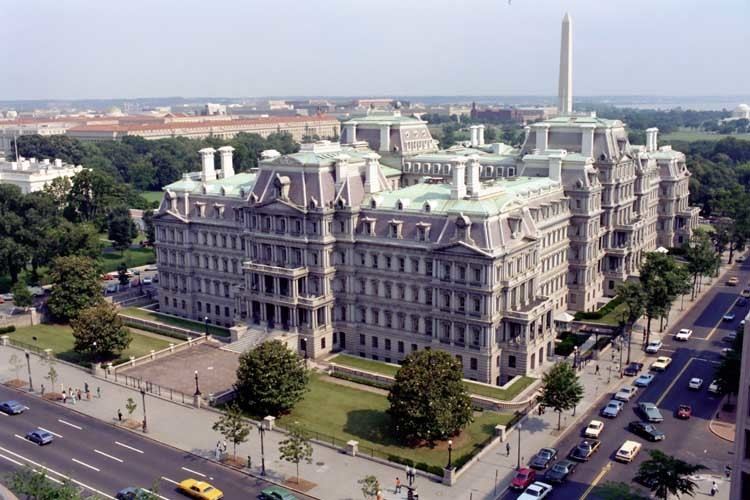 | ||
Second Empire architecture in the United States and Canada is an architectural style known as "Second Empire," most popular between 1865 and 1900, as it was practiced in the United States and Canada.
Contents
In the United States, where the leadings architects working in the style were Alfred B. Mullett and John McArthur, Jr., buildings in the style were often closer to their 17th-century roots than examples of the style found in Europe.
In the United States, where the style is known as Second Empire, Second Empire Baroque, or French Baroque Revival, the Second Empire style frequently combined a rectangular tower, or similar element, with a steep mansard roof, the roof being the most noteworthy link to the style's French roots. This tower element could be of equal height to the highest floor, or could exceed the height of the rest of the structure by a story or two. The mansard roof crest was often topped with an iron trim, sometimes referred to as "cresting". In some cases, lightning rods were integrated into the cresting design, making the feature useful beyond its decorative features. Although still intact in some examples, this original cresting has often deteriorated and been removed. The exterior style could be expressed in either wood, brick or stone. More elaborate examples frequently featured paired columns as well as sculpted details around the doors, windows and dormers.
Floor plans for Second Empire residences could either be symmetrical, with the tower (or tower-like element) in the center, or asymmetrical, with the tower or tower-like element to one side. Virginia and Lee McAlester divided the style into five subtypes:
The architect H.H. Richardson designed several of his early residences in the style, "evidence of his French schooling". These projects include the Crowninshield House (1868) in Boston Massachusetts, the H. H. Richardson House (1868) in Staten Island, New York, and the William Dorsheimer House (1868) in Buffalo, New York.
Chateau-sur-Mer, on Bellevue Avenue, in Newport, Rhode Island, was remodeled and redecorated during the gilded age of the 1870s by Richard Morris Hunt in this style.
Leland M. Roth refers to the style as "Second Empire Baroque." Mullett-Smith terms it the "Second Empire or General Grant style" due to its popularity in designing government buildings during the Grant administration.
The style was also used for commercial structures, and was often used when designing state institutions. Several psychiatric hospitals proved the style's adaptability to their size and functions. Prior to the construction of the Pentagon during the 1940s, the Second Empire–style Ohio State Asylum for the Insane in Columbus, Ohio, was reported to be the largest building under one roof in the U.S., though the title may actually belong to Greystone Park Psychiatric Hospital, another Kirkbride Second Empire asylum.
Second Empire was succeeded by the revival of the Queen Anne Style and its sub-styles, which enjoyed great popularity until the beginning of the "Revival Era" in American architecture just before the end of the 19th century, popularized by the architecture at the World's Columbian Exposition in Chicago in 1893.
